Steal My Craft: Peter Frederiksen
Gallery
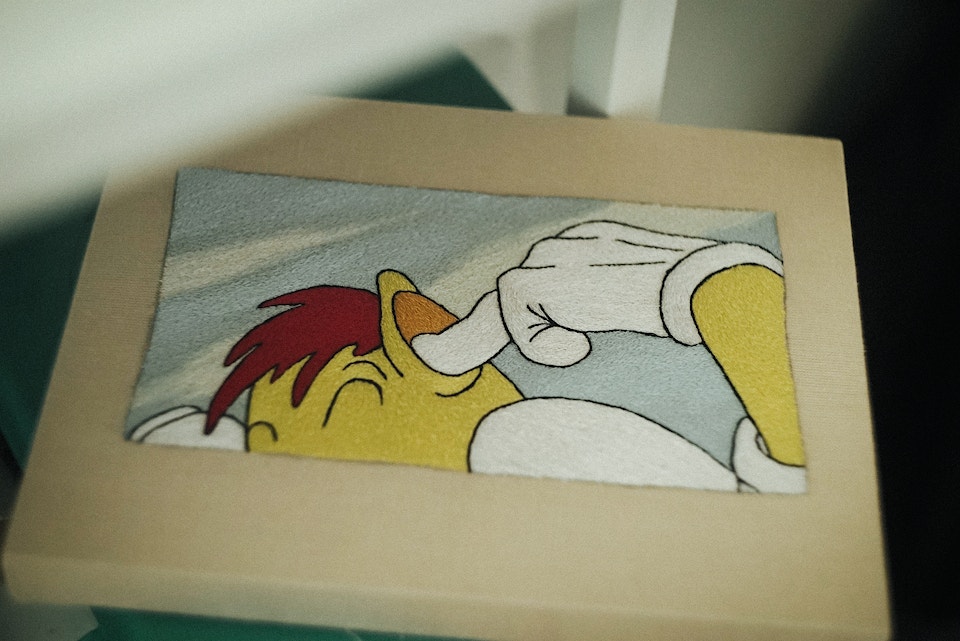
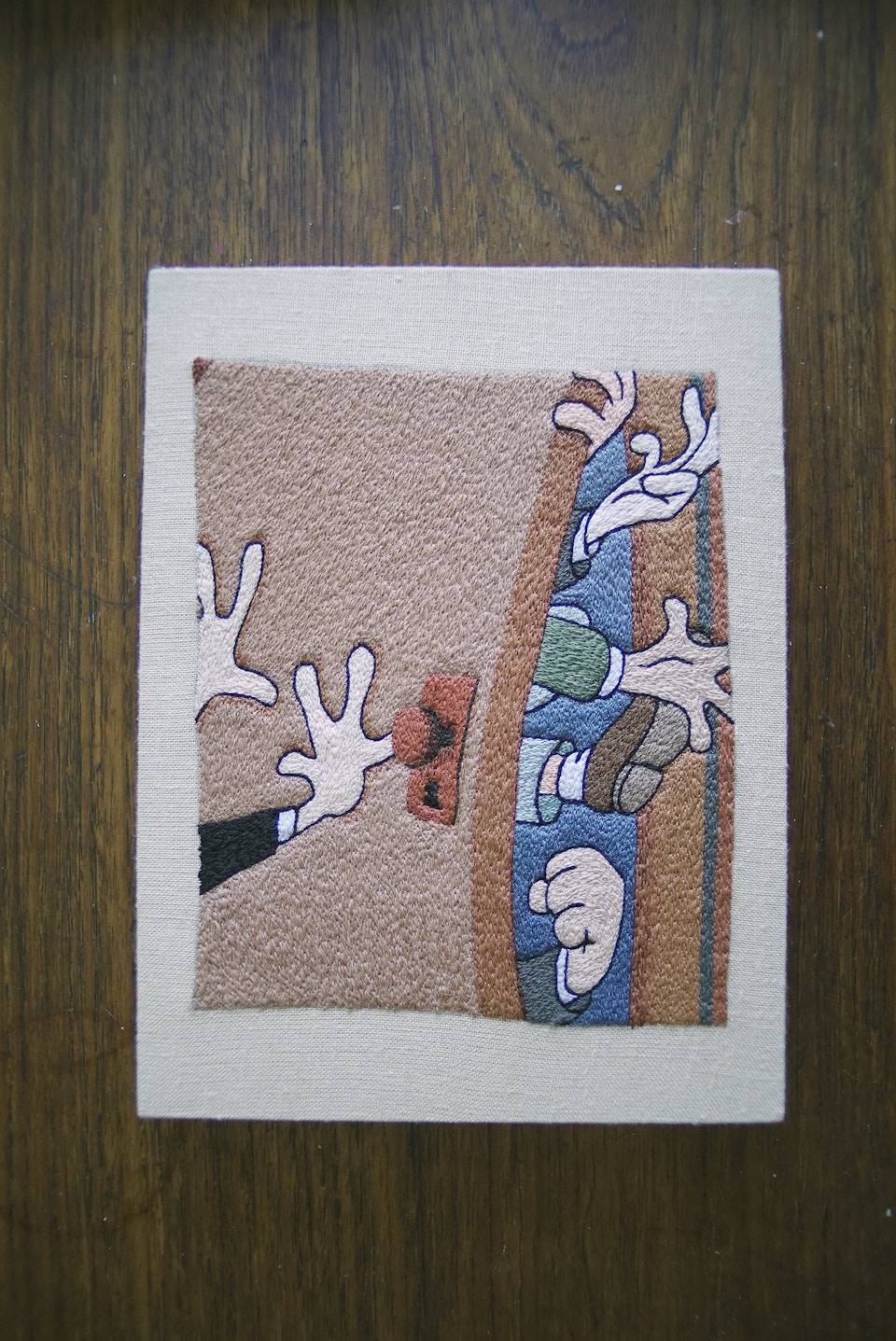

















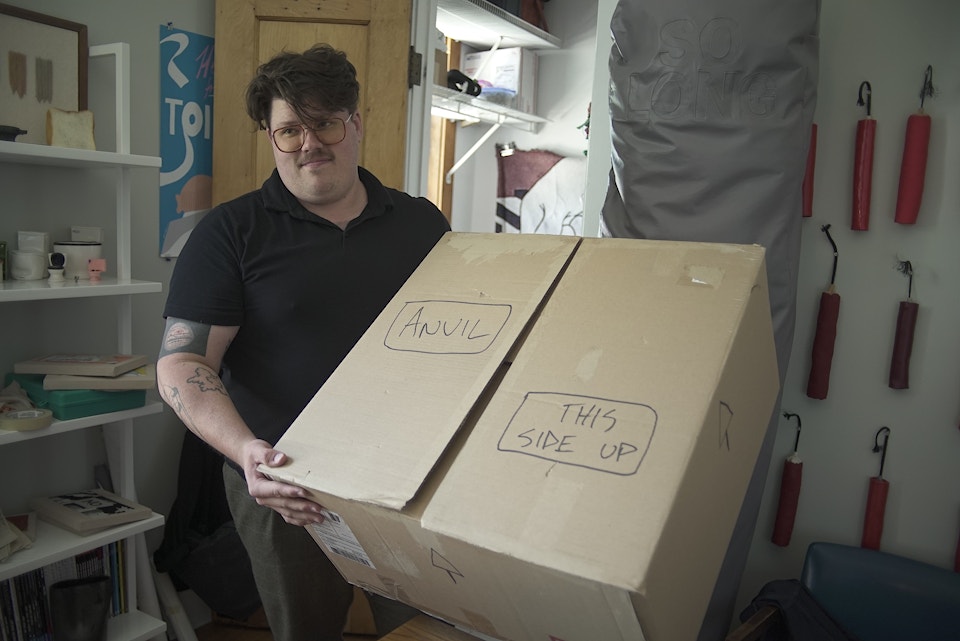
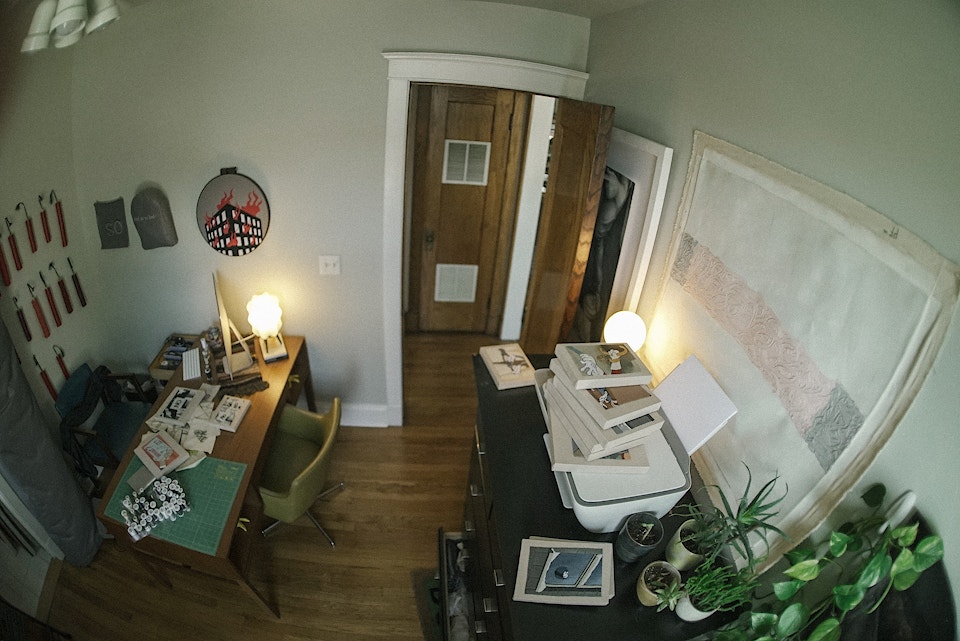


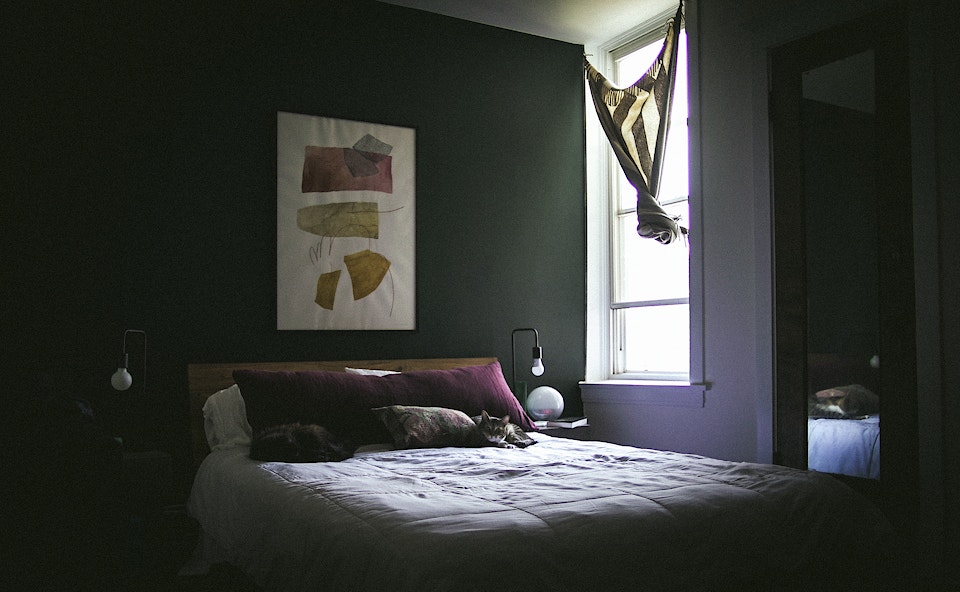
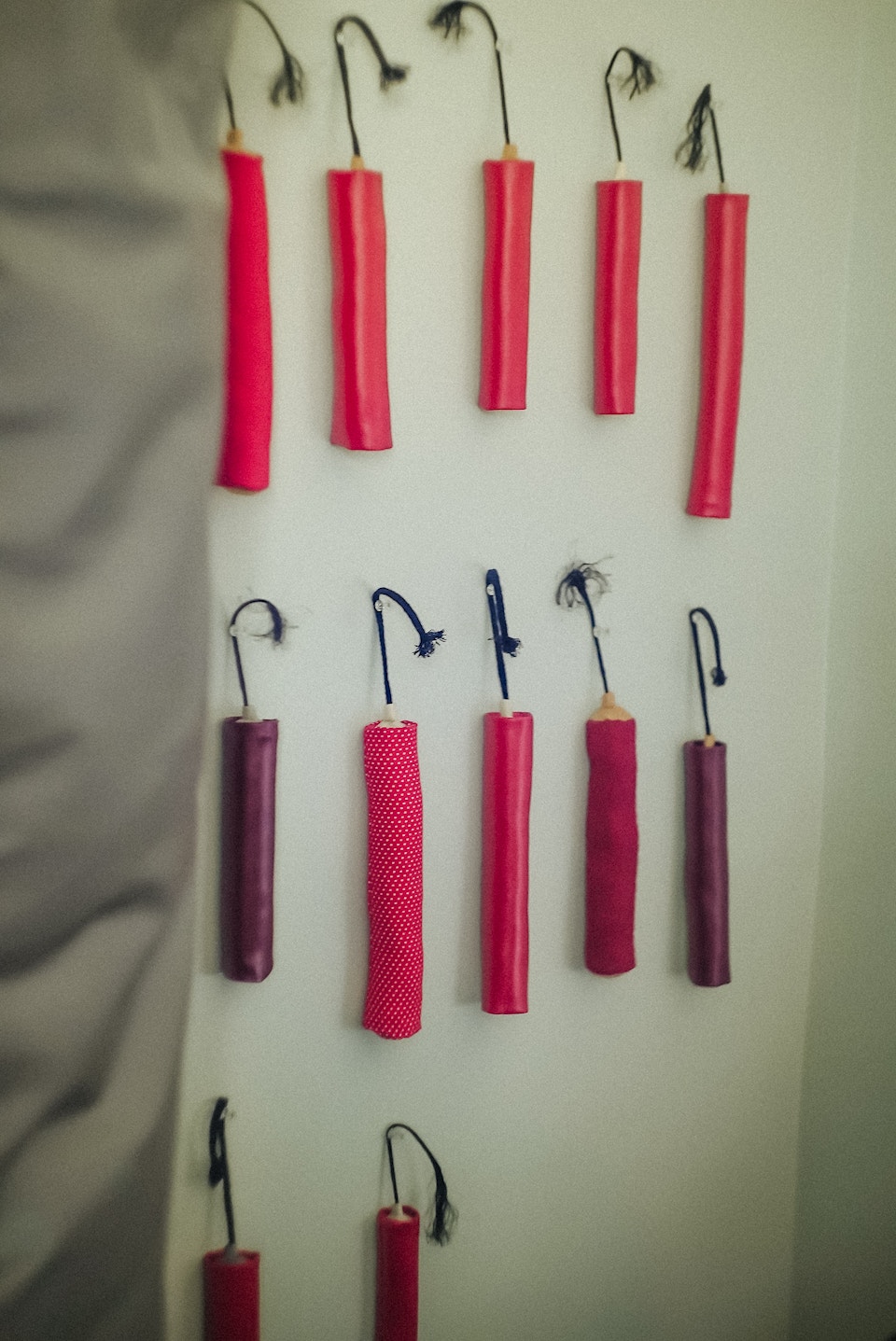


Peter Frederiksen (b. 1987) lives and works in Chicago. He attended the School of the Art Institute of Chicago, focusing studies on painting, drawing, and fibers. His work has been exhibited most recently in London, Milan, Berlin, and Dallas, and can be found in numerous private collections.
Shoes on or off?
We probably should have asked before we traipsed around a new home with ours on, especially considering we’re making a rug together. Luckily, textile artist Peter Frederiksen is firmly in the camp of a quiet minority—shoes on. The notion is slightly unsettling at first, much like his work, but humor and thoughtfulness quickly slice through the tension. “I have smelly feet,” he says reflexively. “I don't want to subject other people to that.”
An art school dropout from the suburbs of Illinois, Peter’s cheerful disposition is tempered by his pragmatic approach to problem-solving. While the experience was mostly a sour one, the opportunity to learn from incredible artists like Karl Wirsum and Darrel Morris while exploring techniques of other mediums expanded his painting practice into the world of soft sculpture and fiber art. “I feel like I'm showing a painter's hand in certain ways. I get a little gestural with it in some of my blending techniques.” He’s equally influenced by a childhood of watching Saturday morning cartoons with a dad who taught him how to stitch badges onto his scout vest, bonding over Looney Tunes characters they both grew up with and that remain universally recognizable to this day.

I love the representation of art as violence, and I don't mean like stabbing somebody with a paintbrush, though that has its own worth. I mean like painting a tunnel on the side of a wall in an effort to catch or kill someone or dropping a piano on somebody's head.


Peter’s scenes of subtly sinister cartoon vignettes are indeed quite painterly, the machine stitching mimics the flow of paint, leaving crevices and textures that enhance the shadowy depth just beneath the surface. As his painting practice evolved into a stitching one, themes of humor, craft, and time still remain. A large early work rendered in small embroidery took about 10 hours vs. 45 minutes to paint. “What has more weight? Is it the time spent? Is it the size of the piece? Is it painting over something traditionally considered more as a craft—which has somehow less worth? And so that's kind of what I was thinking about. That's kind of still what I'm thinking about.”

These are the same questions that often plague us, but also inspire us about Peter's witty but reflective work. We not only collaborated on two of his most representative designs, but he also generously opened his studio to reveal the tools and process behind his practice.
I couldn’t possibly ✋ I couldn’t possibly ✋
Tools ✄




Thread
My favorite thread is polyester, cotton breaks. Coats & Clark has the best muted, neutral colors, and Gutermann has the best greys and vibrant colors. I store all my threads in Artbins, not because they're the best, but they are convenient.
Needles
I just buy a big bag of needles off Amazon; they break all the time so I buy a lot because they're cheap.
Sewing Machine
It's only black because it was on sale, not because it's manly—hahaha. It's a heavy-duty Janome that's slightly altered; the presser foot is removed so I can get the needle closer to the work on the edge of the hoop. I use the same thread for the top and bottom stitching since I work with a tight tension, this keeps the color uniform in case the bottom thread peeks through.
Fabric
I use a linen blend from JoAnn—65/35 rayon. Pure linen is too brittle and has no give so it will rip.
Scissors
Tiny needlepoint Fiskars.
Hoops
Cheap plastic hoops are sturdy and retain their shape—where wood will warp these have give; a 10-inch fits in my sewing machine perfectly.
Bits & Pieces
Often I'll use stainless steel angled tweezers to clean up a piece. I get super close so I can see the topography, find the stitch that needs to come out, tweeze it out, and then use baby nail clippers to get super close to the canvas and snip that single thread. For areas that need more removal, I use a thread cutter. There's this shitty little fluffy paintbrush I use to clean out the machine guts and of course a classic Dixon Ticonderoga pencil to draw on the linen. When I'm done I use a small staple gun to attach the piece to a frame.
Process ➿




Obviously, a lot of Peter's time is spent watching cartoons. He's looking for various color palettes, scenes, and body parts, sometimes combining them into one scene.
He never strays too far from the real scenes always so they feel recognizable, a subliminal reference to the time and place you first saw it. Screenshots go into specific folders - some with literal names like "Hands" or "Expressive Bodies" and others like "I Couldn't Possibly" which feature characters shaking their heads or putting up their hands in refusal.
Once he's settled on a scene, he digitally creates the image on a tablet and then uses it as a lightbox to trace it onto the linen. That gets stretched over an embroidery hoop (inside out, again to get as close to the sewing machine needle as possible), ideally in one piece. Larger pieces have to get moved around the hoop which can create tension issues and obscures a whole view of the piece in progress.
Moving methodically in a straight stitch, he adds shading and detail to the line drawing in thread, using complementary shades and outlines to create texture and definition.

Finishing and Parting Ways ✌


Most finished pieces end up being 6x8", 8x10", or 5x7" and get stapled to prefab wooden panels. The edges are sanded down so the fabric doesn't rip during stretching, then stapled in the center of each side, followed by the corners. He signs the back of each piece and dates them each with the month and year.
Selling pieces, especially rapidly, is a relatively new experience for Peter, "I had no real success until the pandemic." He'd been making them for a while and had amassed an archive of 50-60 which he loved collecting, but eventually began giving away to friends to save space. An artist support pledge hashtag that circulated on Instagram eventually caught his eye and earned him his first slow but steady sales. Once the pace picked up and his work was in the hands of a few collectors with good taste, his pieces were sold in seconds. Now, he spends time keeping up with the host of galleries that are eager to share his work, but he still manages to keep a few of his favorites (aside from one of his only sales regrets, Cabin Fever, pictured).
Peter's work is currently featured in exhibits at Haverkampf Leistenschneider, Galleri Urbane, and Daniel Raphael Gallery, and an upcoming solo show at Massey Klein Gallery in September.








Peter Frederiksen (b. 1987) lives and works in Chicago. He attended the School of the Art Institute of Chicago, focusing studies on painting, drawing, and fibers. His work has been exhibited most recently in London, Milan, Berlin, and Dallas, and can be found in numerous private collections.






